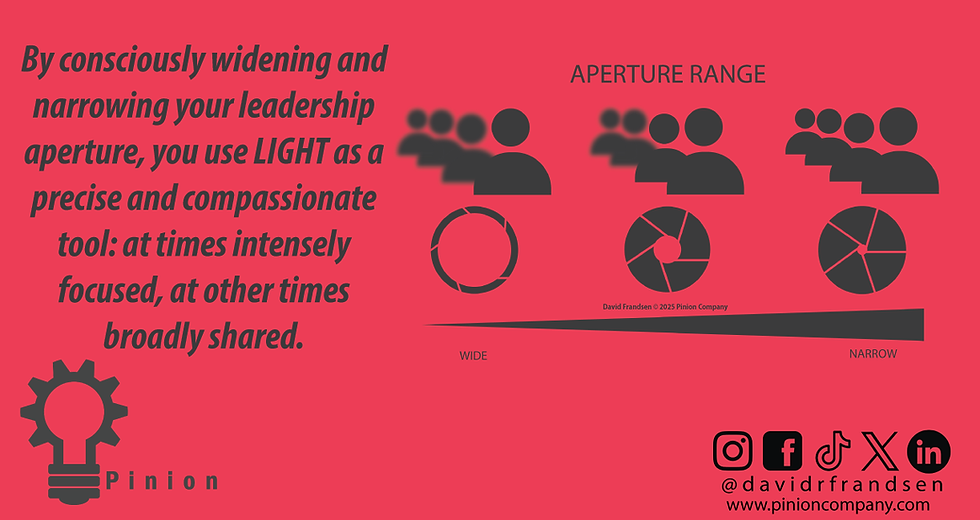Building Relationships Before Results
- David Frandsen
- Jul 14
- 3 min read

It’s easy for leaders to become fixated on skills, metrics, and output. But the real magic happens when we shift our focus: from what people do, to who people are.
People Are the Sun Gear
My leadership model draws inspiration from the planetary gear system, where everything revolves around a central “sun gear.” In this analogy, people are that sun gear—the true source of energy and momentum in any organization. When leaders put people at the center, treating them with respect, empathy, and genuine care, the entire organization moves forward in harmony.
Building Relationships Before Results
It’s tempting to see team members as employees first—resources to be managed, skills to be developed, outputs to be measured. But the most successful organizations recognize something deeper: people are not just workers, they are human beings with unique stories, dreams, and potential. When leaders invest in building sincere relationships, trust and loyalty naturally follow. This foundation of trust allows for open communication, creativity, and a sense of belonging that no training program can replicate.
Human-Centered Leadership Drives Success
Great leadership is about serving your team—prioritizing their well-being, supporting their growth, and fostering a culture where everyone feels valued. This means:
· Prioritizing mental and physical health
· Fostering intrinsic motivation
· Offering mentorship and support
·
Seeing potential and value in every person
Research consistently shows that when people are happy and find purpose at work, productivity and loyalty skyrocket. When you empower and care for your team as people first, success follows—just like a well-oiled planetary gear system.
Practical Tips for Getting to Know Your Employees as People
Building a people-centered organization requires intentional effort. Here are some proven strategies to help leaders connect with their teams on a personal level:
· Regular Personal Check-Ins: Schedule check-ins that focus on how employees are doing personally, not just professionally. Ask about their interests, families, or weekend plans to show genuine care.
· First-Day “Hot Seat”: In our organization we created the “Hot Seat” to help get to know our people. On day one, invite new hires to answer fun, light-hearted questions so the team can connect with them as individuals from the start.
· Team-Building Activities: To build teams you need to provide the space for individuals to get to know each other. Organize informal lunches, coffee breaks, or offsite gatherings where work talk is discouraged, encouraging authentic conversations. In our organization we do games and other activities.
· Interest and Hobby Boards: Create a space—digital or physical—where employees can share their hobbies, favorite books, or weekend adventures to spark connections.
· Peer Recognition Programs: Let employees recognize each other for qualities beyond work performance, such as kindness, humor, or supportiveness.
· Personal Milestone Celebrations: Celebrate birthdays, work anniversaries, and personal achievements to show you value the whole person.
· Open-Door Policy: Invite employees to share thoughts or personal news whenever they feel comfortable.
Building Organizations People Want to Join
The best, most successful organizations are those that see the potential in every individual and build around it. By focusing on the human—not just the employee—we create workplaces where people want to be, not just have to be. This is how we build organizations that win: by putting people at the center, everything else falls into place.
Leadership isn’t about managing output; it’s about nurturing people. When we lead with empathy and build real relationships, we unlock the true potential of our teams—and that’s when extraordinary things happen.




Comments